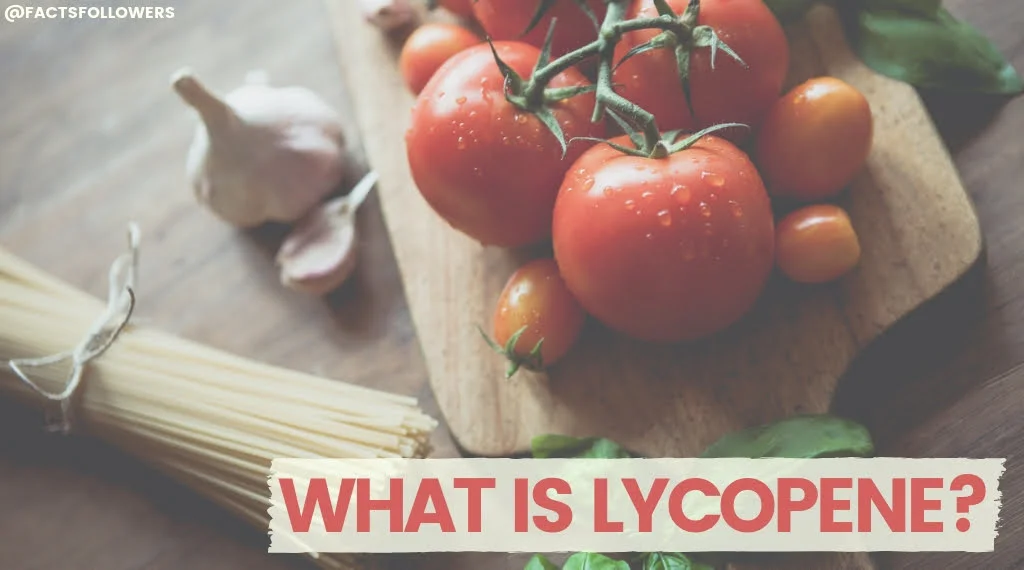
HIGHLIGHTS
- Lycopene is an antioxidant that belongs to the carotenoid group. It’s found in high amounts in red and pink fruits, as well as dietary supplements.
- Lycopene has shown blood pressure-lowering effects and diets rich in lycopene have been associated with lower risk of some types of cancer. It may also have benefits for skin protection.
- There is no official recommended daily intake for lycopene. Average intake in the United States is estimated to be about 2 milligrams of lycopene per day, which is about the amount found in a ½ cup of cherry tomatoes.
- Lycopene in the amounts found in plant sources is thought to be safe for everyone. Certain groups, like people on blood-thinning or blood pressure medications and pregnant women, should avoid using lycopene from dietary supplements.
THE BASICS OF LYCOPENE
Lycopene (pronounced LIE-co-peen) is a nutrient in the carotenoid family (where you can find lutein, zeaxanthin and many others) that’s naturally found in some plants. Lycopene provides the pigment that gives red and pink fruits their color and is known to have antioxidant properties. It’s most commonly associated with tomatoes and tomato products, which are particularly rich sources of lycopene.
LYCOPENE AND HEALTH
Lycopene’s primary role in human health is as an antioxidant. Antioxidants neutralize the activity of reactive compounds called free radicals, which create oxidative stress within our body. Sometimes oxidative stress can be beneficial for our body (like when we need to repair damaged tissues or fight against cancer cells), but when the amount and activity of free radicals overwhelms the protective effects of antioxidants, this uncontrolled oxidative stress can be associated with developing chronic diseases like certain types of cancer and cardiovascular disease. Lycopene’s antioxidant properties help to maintain the balance of free radical activity in the body, which may be protective against some of these conditions.
The strongest evidence of lycopene’s benefit to health is related to its blood-pressure lowering effect. Consuming more than 12 milligrams (mg) of lycopene per day has been shown to lower blood pressure, especially in people with high blood pressure.
Some observational studies have shown an association between a diet rich in lycopene and reduced risk of some types of cancer, including breast, prostate and lung cancers. However, research is inconsistent in these areas and randomized controlled trials have not demonstrated a consistent benefit to consuming lycopene from food or supplements for cancer prevention or treatment.
Although research is limited, lycopene shows promise for offering protection against the harmful effects of sun exposure on our skin. However, it is not a substitute for sunscreen, which should be used even if a person consumes a lycopene-rich diet.
RECOMMENDED INTAKES
An official recommended daily intake for lycopene hasn’t been set because there hasn’t been enough research on its health effects. Consuming at least 12 mg per day of lycopene has shown a blood pressure-lowering effect in people with high blood pressure. Actual intake of lycopene for most Americans is about about 2 mg/day, or about the amount in a ½ cup of cherry tomatoes, meaning that most of us should aim to increase our intake of lycopene-rich foods.
The European Food Safety Authority has established an acceptable daily intake of 0.5 mg lycopene/kilogram body weight per day from all sources, including foods and supplements. Several forms of lycopene, including extracts and synthetically produced lycopene, are generally recognized as safe (GRAS) by the Food and Drug Administration. This means that food producers can use them as additives.
Lycopene is considered very safe to eat and the risk of consuming too much from food is very low. Hyperpigmentation of the skin, in which a person’s skin tone appears yellow or orange, has occurred in people who consumed large quantities of lycopene. This condition – sometimes called lycopenemia – can be reversed by following a low lycopene diet for a few weeks.
FOOD SOURCES OF LYCOPENE
Lycopene is found in red- and pink-hued fruits like tomatoes, watermelon, pink grapefruits, guava and papaya. In North America, most dietary lycopene comes from tomato products such as ketchup, tomato juice, sauce or paste. Sun-dried tomatoes, which have been dehydrated to remove their water content, are one of the most concentrated food sources of lycopene. Cooking tomatoes, which is done when making tomato juice, paste and ketchup, makes lycopene easier for our bodies to absorb compared to the lycopene found in raw tomatoes. Carotenoids like lycopene are fat-soluble, which means that they’re best absorbed when eaten with some type of fat, such as olive oil or butter.
Lycopene is FDA-approved for use as an additive in foods and beverages. It can also be found in a concentrated and isolated form in dietary supplements. However, lycopene supplements should not be used in people taking blood thinners or blood-pressure lowering medications since lycopene can alter their effectiveness. Pregnant women should also avoid using lycopene supplements because in one study, taking them was associated with preterm labor and low birth weight. Consuming lycopene from foods, however, is thought to be safe for each of these groups of people.
| Food | Serving Size | Lycopene content (mg) |
| Canned tomato puree | 1 cup | 54.4 |
| Sun-dried tomatoes | 1 cup | 24.8 |
| Tomato juice | 1 cup | 22.0 |
| Guava | 1 cup, cubes | 8.59 |
| Watermelon | 1 cup, diced | 6.89 |
| Red tomato, raw | 1 cup, chopped | 4.63 |
| Tomato paste | 1 tablespoon | 4.60 |
| Pink and red grapefruit | 1 cup, sections | 3.26 |
| Papaya | 1 cup, cubes | 2.65 |
| Ketchup | 1 tablespoon | 2.05 |




